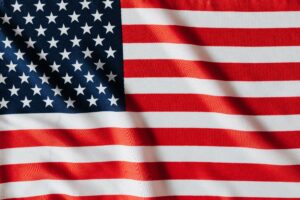
Indian & Chinese Students At The Top B-Schools
| Rank | School | Enrollment (All Programs) | Indian Students | Chinese Students | Other Notables | MBA Enrollment | International MBAs |
| T7 | UC-Berkeley Haas | 1,681 | 15% | 6% | Canada 2%, France/Japan 1% | 627 | 30.10% |
| 9 | Yale SOM | 843 | 15% | 19% | Canada 12%, Mexico 9%, Germany 4% | 692 | 29.30% |
| T10 | NYU Stern | 2,163 | 28% | 25.70% | Canada 8.3%, Republic of Korea 5.7%, Brazil 3.3% | 668 | 22.80% |
| 12 | Duke Fuqua | 977 | 16.80% | 31.00% | Republic of Korea 5.7%, Canada 4.8%, Brazil 4.6% | 798 | 27.40% |
| T13 | Michigan Ross | 1,166 | 39% | 10% | Brazil 12%, Canada 7%, Peru/Japan 4% | 758 | 22.70% |
| T13 | Virginia Darden | 1,023 | 21% | 18% | Nigeria 9%, Peru 7%, South Korea 6% | 733 | 24.00% |
| 15 | Cornell Johnson | 714 | 13.50% | 40.40% | Canada 4.6%, South Korea 4.6%, Mexico 3.2% | 571 | 32.70% |
| T16 | USC Marshall | 1,213 | 11% | 63% | South Korea 4%, Canada 3%, Indonesia 3% | 435 | 21.80% |
| T18 | UCLA Anderson | 1,916 | 38% | 16% | Canada 9%, South Korea 6%, Taiwan 3.5% | 694 | 25.90% |
| T18 | Texas McCombs | 1,028 | 37% | 19% | Mexico 11%, South Korea 6%, Canada 4% | 491 | 15.10% |
| 20 | UNC Kenan-Flagler | 593 | 37% | 13% | South Korea 7%, Japan 6%, Turkey 6% | 593 | 11.50% |
| 21 | Georgetown McDonough | 996 | 40% | 17% | Mexico 7%, South Korea 6%, Canada 4% | 509 | 26.70% |
| 22 | Washington Foster | 722 | 7.90% | 3.20% | Canada 1.1%, Mexico 0.4%, Peru 0.3% | 227 | 25.10% |
| T23 | Indiana Kelley | 503 | 52% | 6% | South Korea 15%, Japan 8%, Taiwan 8% | 225 | 30.70% |
| T23 | Vanderbilt Owen | 423 | 27% | 8% | Japan 10%, Nigeria 8%, Canada 6% | 329 | 10.30% |
| 25 | Rice Jones | 752 | 29% | 21% | Mexico 6%, Nigeria 5%, Spain 5% | 281 | 20.30% |
| 26 | Emory Goizueta | 653 | 5.70% | 4.20% | South Korea 3.4%, Japan 1.2% | 286 | 28.00% |
| 27 | Florida Warrington | 435 | 20% | 8.60% | Venezuela 11.4%, Colombia 6.3%, Mexico 6.3% | 90 | 7.80% |
| T28 | Georgia Tech Scheller | 622 | 50% | 13% | Canada 7%, South Korea 7%, Japan 4% | 157 | 18.50% |
| T28 | Minnesota Carlson | 828 | 64% | 13% | Kosovo 1.5%, Korea 1.5%, Taiwan 1.5% | 139 | 14.40% |
| 30 | Arizona State Carey | 407 | 26% | 41% | Taiwan 7%, Ghana 5%, Nigeria 4% | 131 | 33.60% |
| T31 | BYU Marriott | 395 | 1% | – | Brazil 1.3%, South Korea 0.5%, Canada 0.5% | 256 | 9.00% |
| T31 | Texas-Dallas Jindal | 785 | 32% | 7% | Taiwan 2%, South Korea 1%, Vietnam 1% | 105 | 27.60% |
| T33 | Ohio State Fisher | 537 | 37% | 20% | Vietnam 5%, South Korea 5%, Taiwan 3% | 134 | 15.70% |
| T33 | Penn State Smeal | 161 | 16% | 5% | Nigeria 2%, Brazil 2%, Pakistan 1% | 107 | 26.20% |
| T33 | Rochester Simon | 416 | 46% | 12% | Nigeria 7%, South Africa 4%, Mexico 3% | 232 | 38.80% |
Using ROI to tell the difference
One definition of ROI is that it is “the total earnings minus the cost of the degree, minus the average earnings over the person with only a high school education.” Another definition says that ROI is “the difference between the 20-year median pay for a bachelor’s grad and 24-year median pay for a high-school grad minus the total four-year cost of attendance.”
In its “Best-Value Colleges” list prepared as part of its 2018 College ROI report, PayScale provides a list of colleges that can help students with comparative returns on their college-education investments. Its analysis takes into account the 20-year net ROI of a degree, total four-year cost of attendance, graduation rate, typical number of years to graduate, and the average loan amount.
The list, which provides the names of as many as 1,878 colleges, puts two US service academies in the first, second, and fourth positions. The top 25 includes MIT (third, ROI $1,015,000), Harvey Mudd College (sixth, $978,000), Colorado School of Mines (eighth, $909,000), and Caltech (tenth, $887,000). Georgia Institute of Technology-Main Campus (12th, $856,000), Stanford University (16th, $811,000), Princeton University (18th, $797,000), and Harvard University (25th, $760,000) are some others at the top.
The bottom of the list should also be a revelation for students looking for college admission. It helps identify colleges that don’t promise a great ROI for their students’ investment. From rank 133, the ROI starts to fall below $500,000; and from rank 1456, to below $100,000. From rank 1752, the ROI goes into negative. At the dregs of the list are Mississippi Valley State University (rank 1,878, ROI $ (minus) 174,800) and a host of private colleges with negative ROIs running above $100,000.
Of course, it is no one’s argument that only majors with the highest earnings potential and colleges with the best ROIs can provide high-value college degrees. However, these majors and colleges should be on top of the minds of students, particularly of those who go in for huge education loans or depend on their family for funds or on their own savings. They are well-advised to examine the financial success of the alumni of their target college before they decide.
Top 100 Schools with Rankings
The Leap Quest methodology rewards schools for subjecting themselves to analysis by all five of the most influential rankings. Some 42 out of the 100 ranked MBA programs were ranked on every major list. That approach penalizes schools that deliberately refuse to participate in rankings where they may be at a disadvantage or that fail to gain a rank because the institution’s MBA program isn’t good enough to make every list.
The methodology also favors more fact-based ranking systems that depend on qualitative data that measures the quality of incoming students, their career outcomes as graduates and the return-on-the-investment given MBA tuition costs and scholarships. Rankings heavily based on opinion in surveys completed by students who know their answers will be used to rank their alma maters are given less weight.
Click Here To See the Top 100 Rankings
How Can We Help You ?
Leap Quest MBA Admission service includes all elements of MBA applications that consist of:
- Shortlisting the list of target B-Schools
- Guidance in building MBA application essay write-ups (how to draft essays for MBA application)
- MBA essay editing and guidance in organizing any other aspect of MBA application.
- Guidance in preparing CV/Resume
- MBA Interview preparation service in the event an MBA applicant gets an interview call from a shortlisted B-School
- Any other related part that is inside the scope of B-School application process
- Social Media Consulting
- LinkedIn Assistance
- Drafting Scholarship letters
- Application Form Guidance


